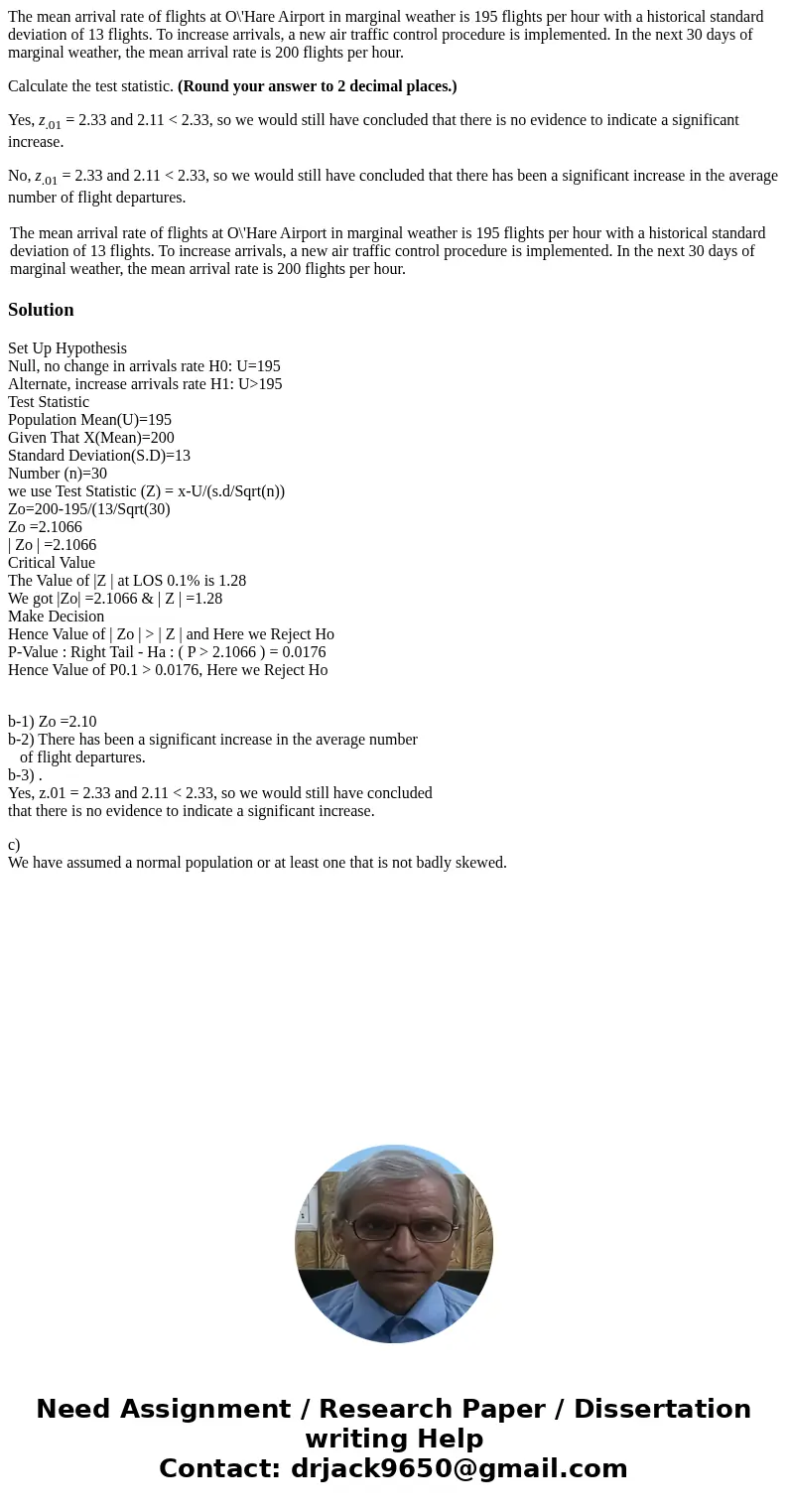The mean arrival rate of flights at OHare Airport in margina
The mean arrival rate of flights at O\'Hare Airport in marginal weather is 195 flights per hour with a historical standard deviation of 13 flights. To increase arrivals, a new air traffic control procedure is implemented. In the next 30 days of marginal weather, the mean arrival rate is 200 flights per hour.
Calculate the test statistic. (Round your answer to 2 decimal places.)
Yes, z.01 = 2.33 and 2.11 < 2.33, so we would still have concluded that there is no evidence to indicate a significant increase.
No, z.01 = 2.33 and 2.11 < 2.33, so we would still have concluded that there has been a significant increase in the average number of flight departures.
| The mean arrival rate of flights at O\'Hare Airport in marginal weather is 195 flights per hour with a historical standard deviation of 13 flights. To increase arrivals, a new air traffic control procedure is implemented. In the next 30 days of marginal weather, the mean arrival rate is 200 flights per hour. |
Solution
Set Up Hypothesis
Null, no change in arrivals rate H0: U=195
Alternate, increase arrivals rate H1: U>195
Test Statistic
Population Mean(U)=195
Given That X(Mean)=200
Standard Deviation(S.D)=13
Number (n)=30
we use Test Statistic (Z) = x-U/(s.d/Sqrt(n))
Zo=200-195/(13/Sqrt(30)
Zo =2.1066
| Zo | =2.1066
Critical Value
The Value of |Z | at LOS 0.1% is 1.28
We got |Zo| =2.1066 & | Z | =1.28
Make Decision
Hence Value of | Zo | > | Z | and Here we Reject Ho
P-Value : Right Tail - Ha : ( P > 2.1066 ) = 0.0176
Hence Value of P0.1 > 0.0176, Here we Reject Ho
b-1) Zo =2.10
b-2) There has been a significant increase in the average number
of flight departures.
b-3) .
Yes, z.01 = 2.33 and 2.11 < 2.33, so we would still have concluded
that there is no evidence to indicate a significant increase.
c)
We have assumed a normal population or at least one that is not badly skewed.

 Homework Sourse
Homework Sourse